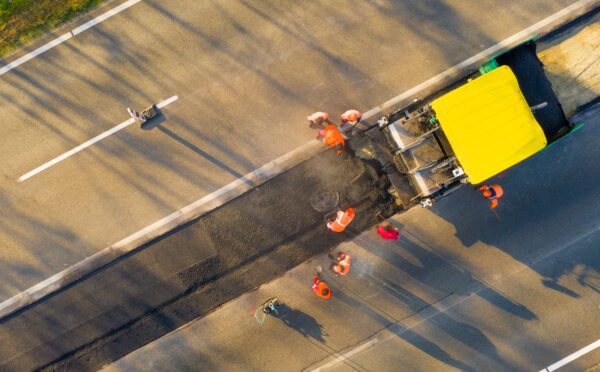Authors
Partner, Commercial, Toronto
Partner, Energy and Construction, Calgary
Partner, Disputes, Montréal
Associate, Disputes, Montréal
Associate, Commercial, Toronto
In response to the economic impacts of the COVID-19 pandemic, governments across the globe have committed to significant spending measures to stimulate recovery. Apart from wage subsidy programs, Canada’s strategic focus to date, at the federal, provincial and territorial levels, has been to encourage private and public sector investment and development of shovel-worthy and shovel-ready infrastructure projects across the country. While policy announcements will continue across the country through the end of the year and beyond, the following is a high-level overview of federal and selected provincial initiatives as of October 2020.
Federal
The federal government’s Investing in Canada Infrastructure Program, which was in effect prior to the onset of COVID-19, provides over $33 billion in funding to provinces and territories through bilateral agreements with Infrastructure Canada for the following four targeted streams: public transit; green infrastructure; community, culture and recreation infrastructure; and rural and northern communities infrastructure. To accelerate the pace of infrastructure upgrades to counter the effects of the pandemic, the government also created the temporary COVID-19 Resilience stream and the COVID-19 Flexibilities transfer program.
The COVID-19 Resilience stream provides over $3 billion in funding for projects with eligible costs under $10 million. Construction for these projects, which include health infrastructure, schools and active transportation infrastructure, must start before September 30, 2021 and be completed by the end of 2021 (or by the end of 2022 for territories and remote communities). The COVID-19 Flexibilities program allows provinces and territories to transfer remaining funding from existing streams to fund projects under the COVID-19 Resilience stream and broadens the types of eligible infrastructure under those streams for a limited time, to include, for example, energy efficiency and reliability projects and mobile and cellular projects in northern communities.
Under the federal government’s Economic Response Plan, Western Canada will receive $1.7 billion to clean orphan and inactive wells. Funding is allocated based on the number of wells in each province, with $1 billion going to Alberta, $400 million to Saskatchewan and $120 million to British Columbia.
Finally, with an increasing number of high-profile mandates across Canada, including clean power, green infrastructure, broadband and transportation, the Canada Infrastructure Bank (CIB) has a $10 billion growth mandate. It is poised to continue partnering with all levels of government while also retaining flexibility to consider unsolicited project proposals from the private sector. CIB’s mandate is designed to contribute directly to economic stimulus and it has the capacity to assist in a variety of ways, from providing transaction advisory services to investing in equity, debt or other instruments. The CIB’s project portfolio is available on its website and includes the Alberta Irrigation Project (Alberta), GO Expansion – On Corridor Project (Ontario) and the Taltson Hydroelectricity Expansion Project (Northwest Territories).
British Columbia
In September 2020, the British Columbia government also implemented B.C.’s Economic Recovery Plan, Stronger BC for Everyone, in which they committed to spending $1.5 billion on economic recovery to respond to immediate needs in the province. The plan includes investing more than $400 million in community infrastructure. Also, both the federal and provincial governments have made additional commitments to the British Columbia Infrastructure Program with extra funding of $100.6 million towards community, culture and recreation infrastructure, $58.7 million towards rural and northern communities infrastructure and $47 million towards green infrastructure. The province will contribute an additional $90 million to the Connecting British Columbia program that targets communications and connectivity infrastructure.
Alberta
In June 2020, the government of Alberta launched Alberta’s Recovery Plan, which includes spending more than $10 billion on core infrastructure projects that will immediately create thousands of jobs in the province. Some key elements include: $6.9 billion for capital projects, $600 million for large scale infrastructure projects, $150 million for water infrastructure, $500 million in further funding for municipalities and $1.5 billion for the Keystone XL pipeline. To prioritize long-term infrastructure investments, the government also proposed the introduction of the Alberta Infrastructure Act and the development of a new 20-year Strategic Capital Plan. Together these will create transparency in relation to government capital spending and ensure future infrastructure needs are anticipated.
Québec
In March 2020, the Québec government announced $11 billion in funding towards various infrastructure projects, including schools, roads and public transportation. This funding will be included in the Québec Infrastructure Plan, an initiative for which the government has provided a 10-year investment plan for the infrastructure sector (2020-2030). Further, in May 2020, the Québec government announced that it would spend up to nearly $3 billion in infrastructure projects to boost the economy in response to the COVID-19 pandemic.
In September 2020, Québec tabled Bill 66, An Act respecting the acceleration of certain infrastructure projects, which seeks the acceleration of major infrastructure projects in Québec to help the economy benefit more quickly from the resulting infrastructure and to mitigate the effects of the COVID-19 pandemic. Bill 66 designates 181 large-scale infrastructure projects in Québec, which include the construction of major roads and bridges, hospitals, schools and public transit systems. The Bill allows such projects to benefit from a number of acceleration measures in relation to expropriation, environment, land use planning and public contracts. On November 3, 2020, Bill 66 was adopted in principle.
In October 2020, Québec announced that CDPQ Infra, a division of the Caisse de dépôt et de placement du Québec, was mandated to carry out a study on the optimal solution for the implementation of mass transit on the south shore of Montréal. CDPQ Infra is currently building the Réseau express métropolitain, a 67-kilometre automated light rail system linking the south and north shores of Montréal, downtown, the western portion of the island of Montréal and the Trudeau International Airport.
Ontario
In July 2020, Ontario government passed a trilogy of stimulus-related measures – the COVID-19 Economic Recovery Act, 2020 (the Recovery Act), the Reopening Ontario (A Flexible Response to COVID-19) Act, 2020 (the Reopening Act) and the Building Transit Faster Act, 2020 (the Transit Act).
The Recovery Act itself is an omnibus statute that accelerates economic recovery by using infrastructure as a key driver. It enacts a new Transit-Oriented Communities Act, 2020, and amends key legislation such as the Environmental Assessment Act, the Planning Act, the Occupational Health and Safety Act and the Building Code Act. The Reopening Act gives continuity to the emergency orders issued during COVID-19, and provides rules for businesses to open safely. Finally, the Transit Act expedites the delivery of four significant transit projects in the Greater Toronto Area.
In August 2020, Ontario announced that for 2021-22, the government will be providing $30 million to support the Connecting Links Program to build, repair or replace local roads and bridges. Further, the Ontario government, through the Safe Restart Agreement with the federal government, will be providing up to $4 billion in phased assistance to its municipalities to protect the health and well-being of communities, while continuing to deliver critical public services, such as public transit and shelters.
Conclusion
Across Canada, governments of the largest provinces have prioritized infrastructure investment to stimulate economic recovery from COVID-19, with a focus on shovel-worthy projects consistent with government objectives. In addition, each of Saskatchewan, Manitoba, Nova Scotia, PEI, New Brunswick, Newfoundland and Labrador, and the territories have detailed capital and infrastructure plans, funding announcements and partnerships under the federal funding programs, and further announcements are expected well into 2021. As a result, there are significant investment and development opportunities in Canada for the private and the public sectors.

